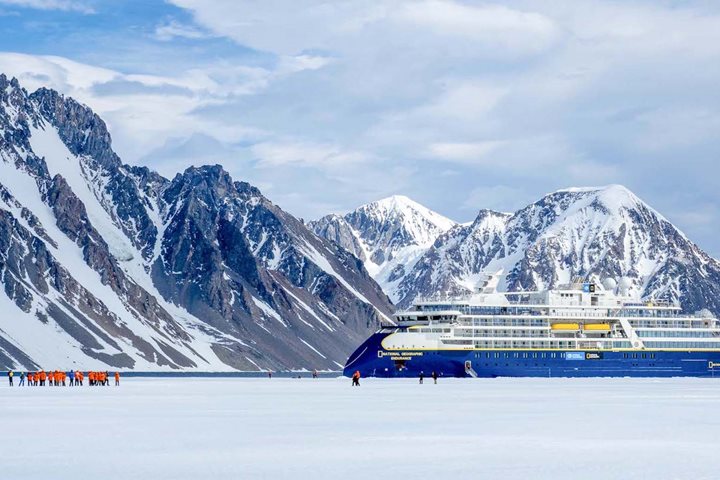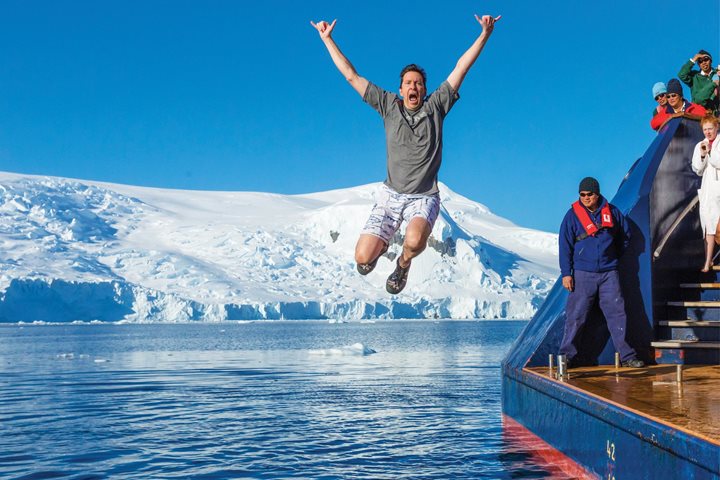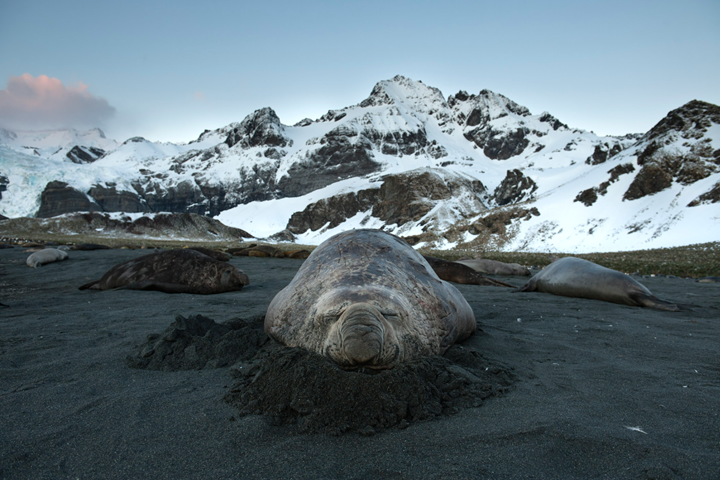CallTest +1.800.397.3348
- WorldView
- 3 Min Read
- 29 Jan 2019
Killer Whale Research on the National Geographic Explorer
Killer whales are instantly recognizable and live in all the world’s oceans, but there is relatively little known about their habits in the wild, especially in remote locations such as Antarctica. Scientists Dr. Bob Pitman and Dr. John Durban have been supported by the Lindblad Expeditions-National Geographic (LEX-NG) Fund since 2011 to facilitate their ongoing killer whale research in Antarctica.
Killer whales are the top predators in the Antarctic marine environment and a deeper understanding of their ecology provides key information on the function of the earth’s most rapidly changing ecosystem. Pitman and Durban are deploying small satellite tags to track killer whale movements and migration to identify key foraging habitats and assess the impact of their predation. Their research has revealed the deepest dives recorded by any of the world’s killer whales (>2,000ft) and documented a remarkable “maintenance migration” of Antarctic killer whales to the edge of the tropics and back (>5,000 mile round trip), presumably to recover from the demands of foraging in the freezing Antarctic waters. Get Inspired by Photos, Videos, Webinars, Stories, and Exclusive Offers. Sign Up
Their research is not all high-tech, however. They use photographs to recognize individual whales from natural markings and estimate abundance and population trends, often using photographs contributed by guests and naturalists on board the National Geographic Explorer. In addition, they sometimes collect tiny skin biopsy samples from individual whales. DNA analysis helps determine how many species of killer whales are currently in Antarctica waters, which may be as many as 4 or 5. Below are some photos for the scientists research.
Photo by ©John Durban
Killer whales are frequently observed during Antarctic expeditions aboard National Geographic Explorer, providing researchers with the opportunity to learn about their ecology.
Photo by ©Holly Fearnbach
Killer whales are the oceans’ top predators, but observations of their predation are rare. This attack on a gentoo penguin was photographed from National Geographic Explorer.
Photo courtesy of ©Kathryn Jeffs
Scientists Dr. John Durban (left) and Dr. Bob Pitman (right) spend hours each day searching for killer whales to learn more about their role in Antarctica’s rapidly changing marine ecosystem.
Photo courtesy of ©Mark Thiessen (National Geographic Photographer)
Durban and Pitman deploy small (40g) satellite tags on killer whales’ dorsal fins, allowing them to track the whales for up to 4 months and learn more about their ranging and foraging patterns.
Courtesy of ©John Durban
Durban and Pitman have discovered that killer whales tagged in Antarctica make remarkable (5,000 mile round trip) “maintenance migrations” to the sub-tropics, presumably to recover from the demands of feeding in the freezing Antarctic waters.
Photo by ©John Durban
Dr. Bob Pitman explains his research to guests. Killer whale photographs from guests and naturalists are compiled to distinguish individual whales and estimate abundance



